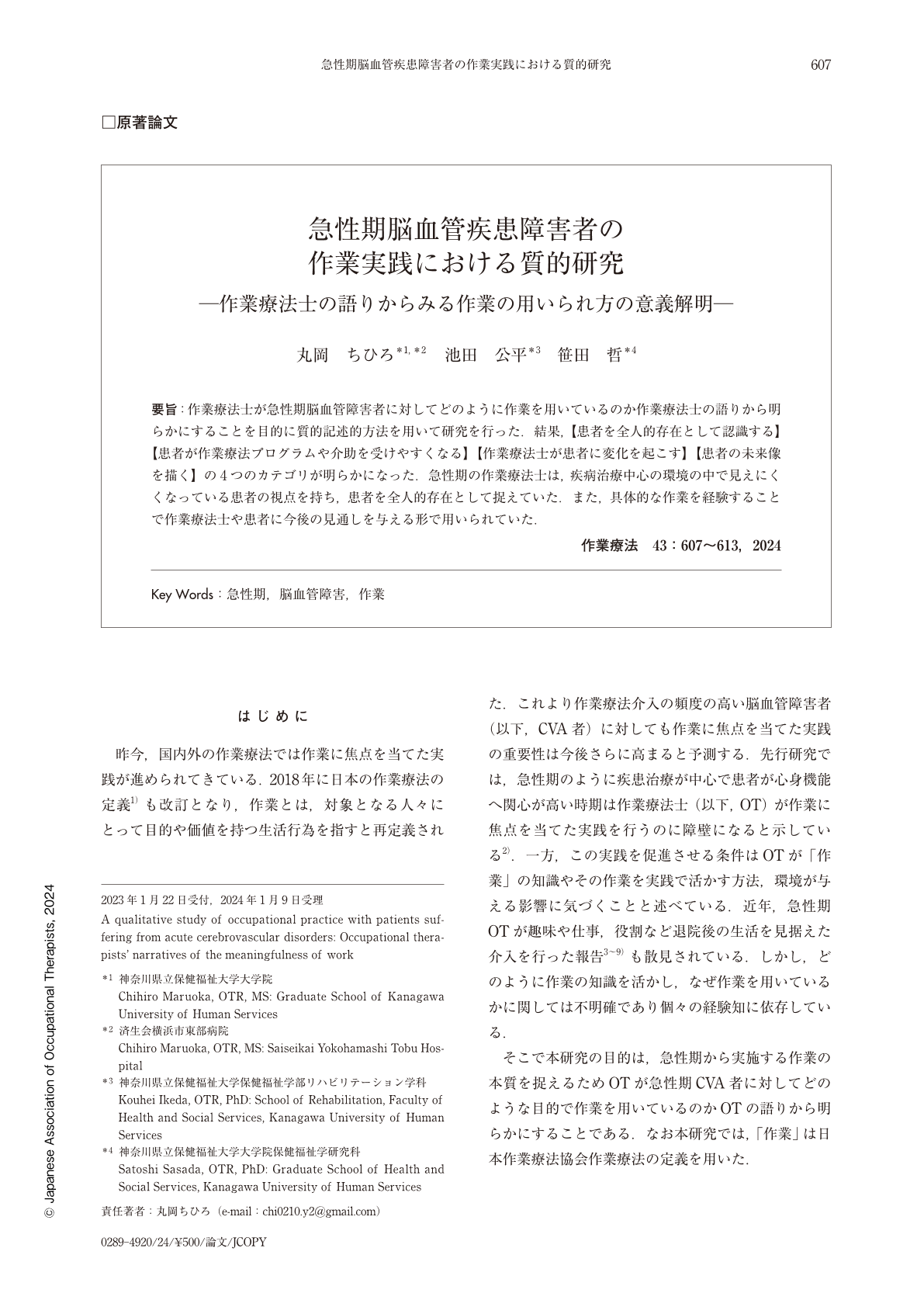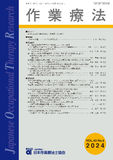Japanese
English
- 販売していません
- Abstract 文献概要
- 1ページ目 Look Inside
- 参考文献 Reference
要旨:作業療法士が急性期脳血管障害者に対してどのように作業を用いているのか作業療法士の語りから明らかにすることを目的に質的記述的方法を用いて研究を行った.結果,【患者を全人的存在として認識する】【患者が作業療法プログラムや介助を受けやすくなる】【作業療法士が患者に変化を起こす】【患者の未来像を描く】の4つのカテゴリが明らかになった.急性期の作業療法士は,疾病治療中心の環境の中で見えにくくなっている患者の視点を持ち,患者を全人的存在として捉えていた.また,具体的な作業を経験することで作業療法士や患者に今後の見通しを与える形で用いられていた.
The purpose of this study was to clarify how occupational therapists treated acute stroke patients by incorporating qualitative descriptive methods. As a result, 28 codes, 9 sub-categories, and 4 categories were generated; the categories included Occupations grasping the patient as a personA qualitative study of occupational practice with patients suffering from acute cerebrovascular disorders: Occupational therapists' narratives of the meaningfulness of work, [increased likelihood of patients to receive assistance in occupational therapy programs and wards], [Occupational therapists changing patients], and [Occupational therapists and patients visualizing the future]. It becomes clear that occupational therapists make changes to patients and that occupational therapists and patients envision the future. The occupational therapist who treated a patient in the acute phase empathized with the patient who was difficult to treat in the medical environment and regarded the patient as a person. In addition, the occupational therapist and the patient experienced specific perspectives through carrying out specific tasks.

Copyright © 2024, Japanese Association of Occupational Therapists. All rights reserved.


